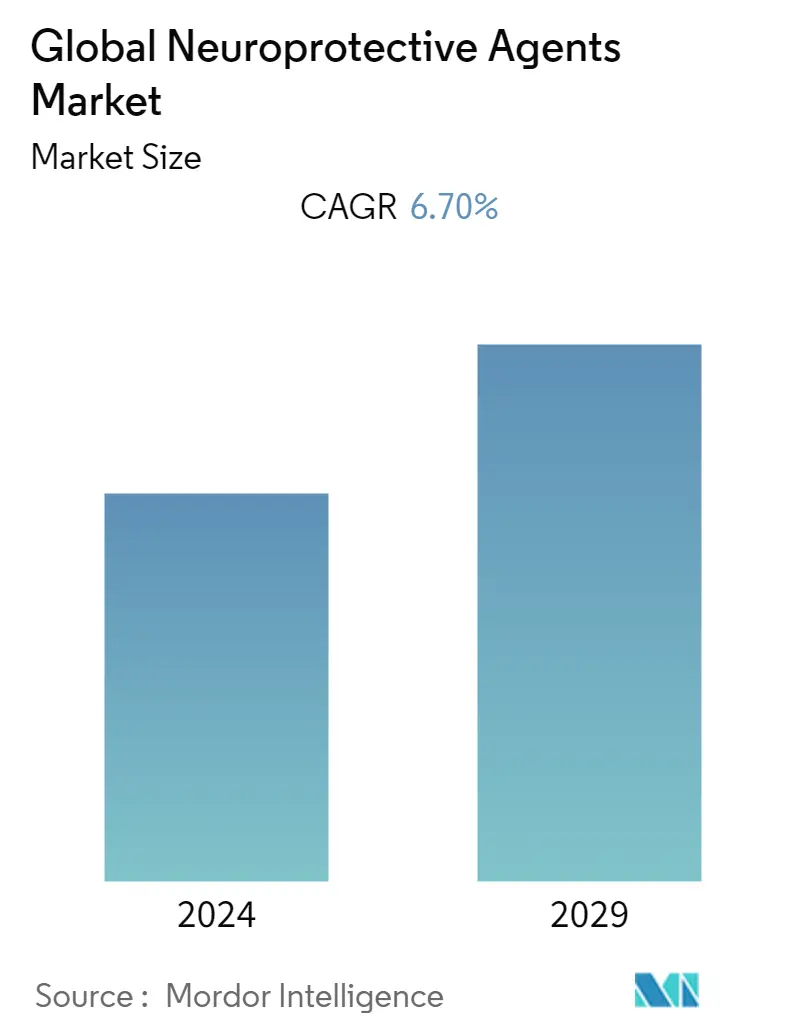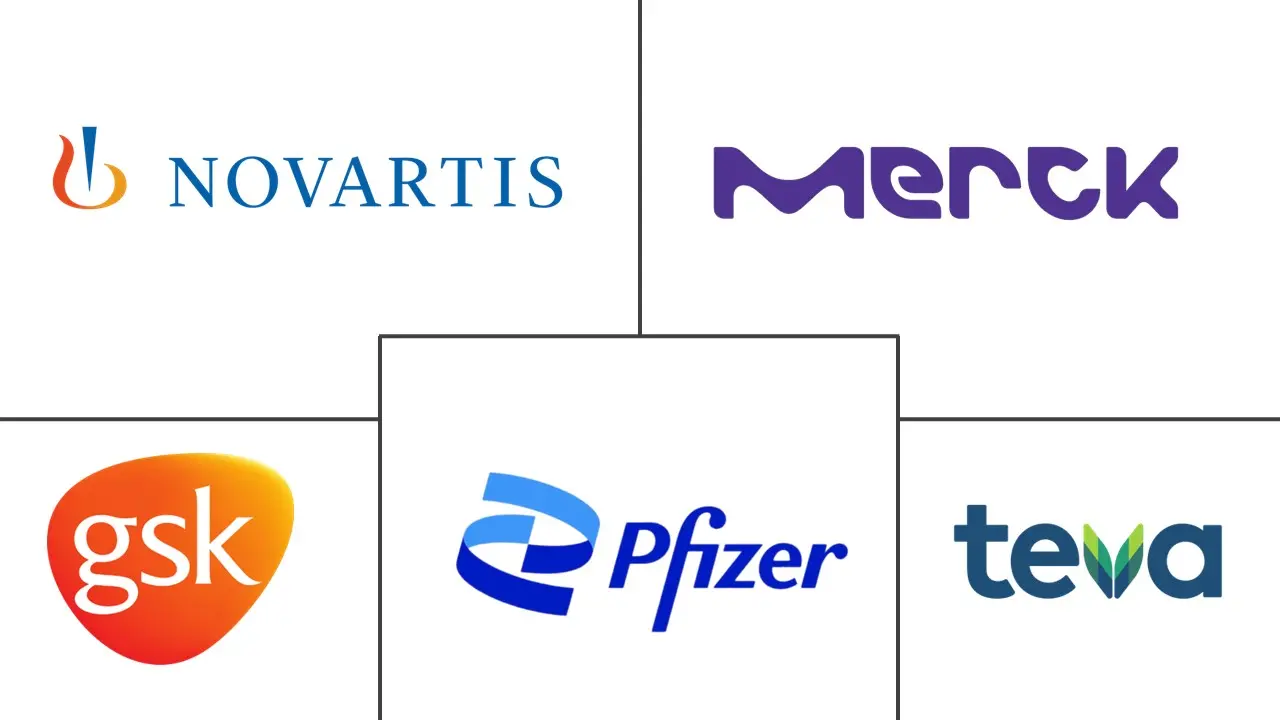Market Size of Global Neuroprotective Agents Industry

| Study Period | 2019 - 2029 |
| Base Year For Estimation | 2023 |
| Forecast Data Period | 2024 - 2029 |
| CAGR | 6.70 % |
| Fastest Growing Market | Asia-Pacific |
| Largest Market | North America |
Major Players
*Disclaimer: Major Players sorted in no particular order |
Need a report that reflects how COVID-19 has impacted this market and its growth?
Neuroprotective Agents Market Analysis
The Neuroprotective Agents Market is projected to register a CAGR of 6.70% during the forecast period (2022-2027).
The COVID-19 epidemic has had a significant impact on the market. Many COVID-19 patients have shown neurological symptoms and indicators since the outbreak of the COVID-19 pandemic in 2020. According to an article published in January 2021 titled "The Impact of the COVID-19 Pandemic on People with Neurological Disorders: An Urgent Need to Improve the Health Care System's Preparedness," data from Spain, particularly the Madrid area, show that 95% of hospitals have re-allocated neurologists to assist COVID-19 patients, and the number of beds in neurology wards has been reduced by 89%. The pandemic has exposed the lack of sufficient health care for patients with neurological illnesses, particularly in locations where hospital-community integration is already lacking. Thus, COVID-19 increased the chances of neurological damage, which is expected to drive the market growth.
The factors expected to drive the market growth include the increasing prevalence of neurological diseases. Worldwide, neurological illnesses are a leading cause of disability and mortality. The 'big three' neurodegenerative disorders, Alzheimer's disease, Parkinson's disease, and amyotrophic lateral sclerosis, cause significant morbidity and mortality in the aged population across the globe. Neuroprotective medicines are those that help to maintain the structure and function of neurons. Neuroprotective medications have the potential to reduce the 6 million deaths caused by stroke each year. According to the World Health Organization's data updated in February 2022, around 50 million people worldwide suffer from epilepsy every year.
Also, according to the National Health Service (NHS) England updates from April 2022, around 1 in 12,500 people in England will have a ruptured brain aneurysm every year. Furthermore, around 3.0% of adults in the United Kingdom have a cerebral aneurysm. Also, according to the Brain Aneurysm Foundation statistics updated in May 2020, an estimated 6 million Americans are affected by cerebral aneurysms each year. Additionally, as per the Parkinson's Foundation Statistics updated in April 2020, more than one million people were living with Parkinson's disease in the United States by 2020 and nearly 60,000 Americans are diagnosed with Parkinson's disease every year. Thus, in view of the high incidence of neurological disorders globally. Thus, the vast and rapidly growing patient population base for target diseases across the key markets is primarily responsible for the significant volume consumption of neuroprotective agents, leading to market growth.
Secondary biochemical alterations in the brain are caused by traumatic brain injuries and stroke. This causes tissue damage as well as neuronal cell death. Neuroprotective medications help patients avoid subsequent tissue loss and improve their behavioral outcomes. Several clinical trials are looking into this outcome. As per the study published in May 2021, titled 'Traumatic brain injury: Epidemiology, Classification, and Pathophysiology', traumatic brain injury (TBI) is a major source of health loss and disability worldwide. Globally, the annual incidence of TBI is variably estimated at 27 to 69 million. Many survivors live with significant disabilities, resulting in major socioeconomic burden.
The rising frequency of neurological illnesses has prompted several academics and manufacturers to ramp up their research and development efforts in order to create neurological disorder medications for therapy. Various companies from around the world have submitted applications for the most promising neurological illness medications, which are currently in various stages of regulatory approval. Various producers, on the other hand, have previously released medications for neurological disorders. Improving neurological disorder medication research and development efforts are expected to meet the demand for neurological disorder drugs while also increasing the supply of neurological disorder drugs at the most competitive pricing. As a result, the market is being driven by increased research and development for neurological illness medications.
Governments all around the world are focusing more on healthcare infrastructure and taking the required steps to build or change it, as well as advance therapeutic delivery. Over the last few years, the healthcare infrastructure in developing countries has been through major changes by government and regulatory bodies, all of which are aimed at improving healthcare delivery and incorporating all segments of the population. Increased focus on healthcare infrastructure is predicted to boost public investment, reliability, and the pace of diagnosis and treatment, resulting in new prospects for neurological disorders and driving the market.
